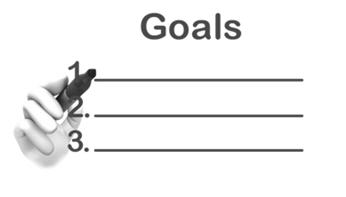Financial Planning 101 Basic Strategies for Achieving Your Financial Goals

The most difficult aspect of financial planning 101 is starting it.
For many people it is high on their list of get-around-to-it projects which means they will do it when they get around to it.
Once they get past the procrastination, and armed with some basic tools, they usually find that it is both an easy and fulfilling project.
All you really need is some basic financial planning tips and tools to get you on your way to accomplishing your most important financial goals.
Financial Planning 101 - Step by Step Strategies
Set Your Goals
The most important element of financial planning 101 is to know what it is that you want to accomplish financially.
We all know that we want to be able to retire on time.
That is a goal that most people share. But, our own vision of what retirement will look like is most likely very unique.
It is important to know what you want to accomplish, but it is more important to know what that would really mean to you and your family.
Establish your goals by time horizon – short term, medium-term and long-term.
Prioritize Your Goals
For most people, financial planning is about making the most out of limited or finite resources.
It’s often not possible to accomplish everything all at once, so goals need to be prioritized.
If you have multiple goals, the question you have to ask yourself is, “If I can only achieve just one goal, which one would be the most important to achieve?”
The answer will be your number one priority. Then ask the same question for all of the remaining goals until they have been prioritized.
Financial Planning 101 Doesn't Have To Be Hard

Quantify Your Goals
You will need to know how much your goals will cost.
The most practical way to do this is to express the costs in terms of today’s dollars and then add an inflation factor for the period of years until the goal is to be reached.
For instance, if your goal is to retire in the same lifestyle manner in which you currently live, you could create a retirement budget for today that might exclude some expenses you are currently paying.
Then you take that dollar amount and factor an inflation rate.
You might have to use a financial calculator or a spreadsheet program to apply a compounding formula.
There are also some free financial calculators you can access on line.
Determine Your Savings Amount
Many people determine their savings amount based on whatever is left over at the end of the month after all expenditures.
The reason they might do it that way is because they don’t have clearly defined and quantified financial goals.
The other way to do is to go through your budget line by line and establish a spending limit for each item.
It’s also a good time to determine which non-essential expenditures could be reduced or eliminated.
Hopefully you end up with a positive balance from which you can derive a savings amount.
The key is that you commit to that savings amount each month.
Determine Your Savings Needs
Starting with your top priority, you will need to determine how much it will require in monthly savings in order to achieve the goal.
You will need to make an assumption as to how much you your savings will earn over the time horizon.
It’s better to plan with conservative assumptions. You may need a financial calculator, spreadsheet or an online calculator to do this calculation.
Start Saving
Saving is a habit so you need to stick with it. The best approach is to initiate an automatic deposit program from your bank account to a savings or investment account.
Financial planning is not a one-time event. Your financial situation and the economic environment are always in a state of flux.
So it is important to review your plan to check its progress and make adjustments as needed.
From Financial Planning 101 to Basic Financial Planning
From Financial Planning 101 to Successful Wealth Approach Home